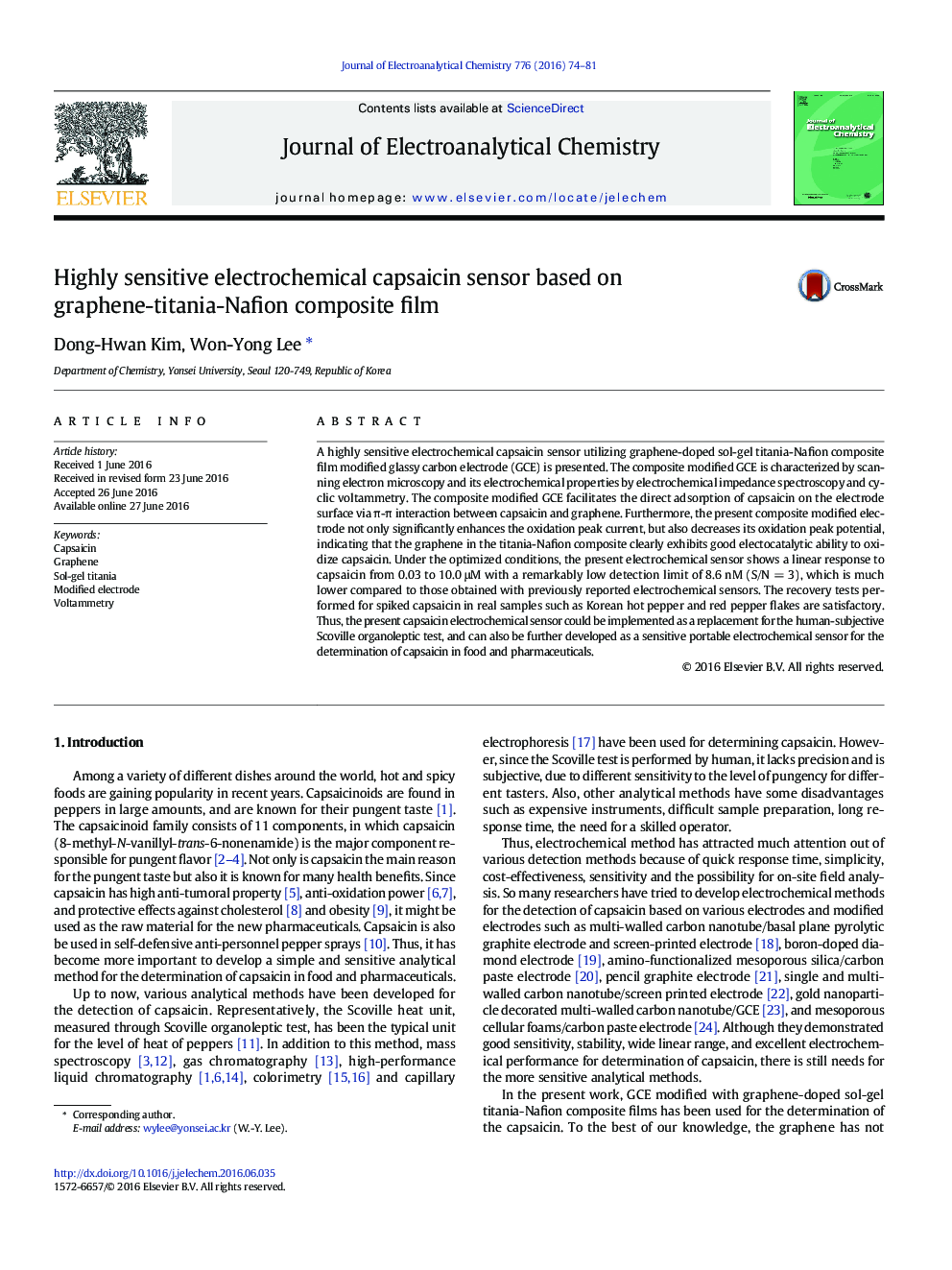| کد مقاله | کد نشریه | سال انتشار | مقاله انگلیسی | نسخه تمام متن |
|---|---|---|---|---|
| 217772 | 463167 | 2016 | 8 صفحه PDF | دانلود رایگان |
• A highly sensitive electrochemical capsaicin sensor was developed using graphene‐titania‐Nafion composite
• The electrochemical sensor facilitates the direct adsorption of capsaicin on the electrode surface via π‐π interaction
• The electrochemical sensor significantly enhances the oxidation peak current and decreases its oxidation peak potential
• A remarkably low detection limit of 8.6 nM (S/N = 3) was obtained, which is much lower compared to previous reports.
• Recovery test performed for spiked capsaicin in real samples was satisfactory.
A highly sensitive electrochemical capsaicin sensor utilizing graphene-doped sol-gel titania-Nafion composite film modified glassy carbon electrode (GCE) is presented. The composite modified GCE is characterized by scanning electron microscopy and its electrochemical properties by electrochemical impedance spectroscopy and cyclic voltammetry. The composite modified GCE facilitates the direct adsorption of capsaicin on the electrode surface via π-π interaction between capsaicin and graphene. Furthermore, the present composite modified electrode not only significantly enhances the oxidation peak current, but also decreases its oxidation peak potential, indicating that the graphene in the titania-Nafion composite clearly exhibits good electocatalytic ability to oxidize capsaicin. Under the optimized conditions, the present electrochemical sensor shows a linear response to capsaicin from 0.03 to 10.0 μM with a remarkably low detection limit of 8.6 nM (S/N = 3), which is much lower compared to those obtained with previously reported electrochemical sensors. The recovery tests performed for spiked capsaicin in real samples such as Korean hot pepper and red pepper flakes are satisfactory. Thus, the present capsaicin electrochemical sensor could be implemented as a replacement for the human-subjective Scoville organoleptic test, and can also be further developed as a sensitive portable electrochemical sensor for the determination of capsaicin in food and pharmaceuticals.
Figure optionsDownload as PowerPoint slide
Journal: Journal of Electroanalytical Chemistry - Volume 776, 1 September 2016, Pages 74–81
